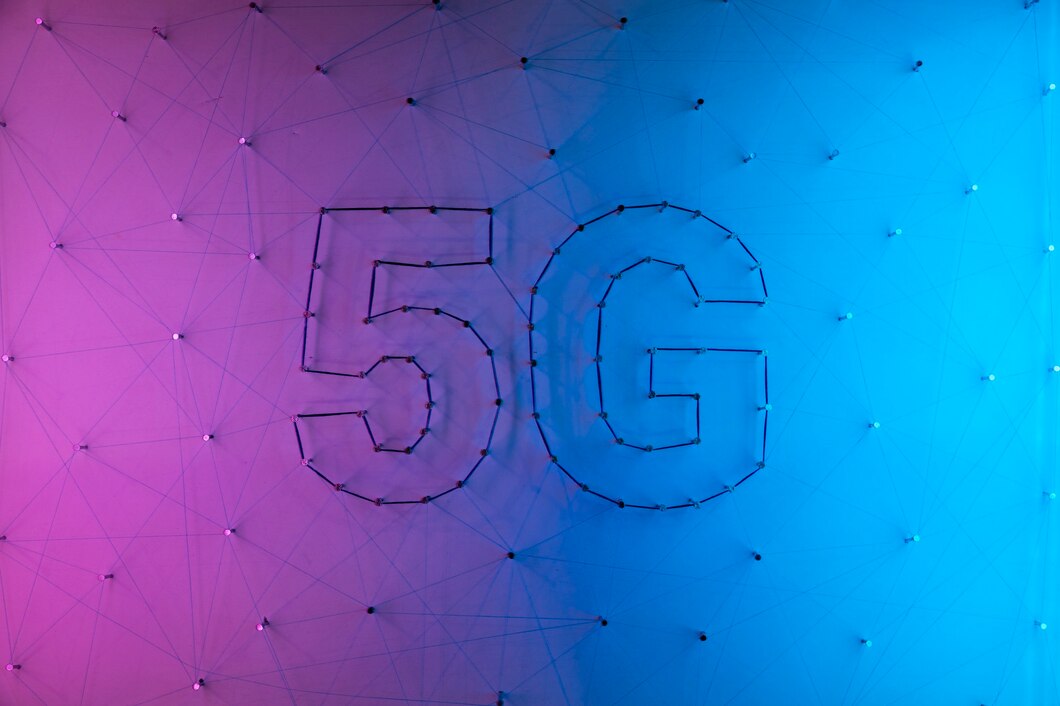Introduction
The advent of 5G technology marks a significant milestone in the evolution of telecommunications, promising unparalleled speed, reduced latency, and enhanced connectivity. As the world becomes increasingly reliant on digital platforms, the streaming industry stands to benefit immensely from the deployment of 5G networks. This article delves into the multifaceted impact of 5G on the streaming industry, examining how this next-generation technology is poised to revolutionize content delivery, user experiences, and the broader media landscape.
Understanding 5G Technology

5G, the fifth generation of mobile network technology, is designed to provide faster data speeds, lower latency, and more reliable connections compared to its predecessors. With theoretical speeds reaching up to 10 Gbps, 5G is set to support a wide range of applications, from enhanced mobile broadband to the Internet of Things (IoT) and beyond.
Introduction to 5G and Streaming
The introduction of 5G technology is a game changer for the streaming industry. With faster speeds and better connectivity, 5G is reshaping how we watch and interact with digital content. It offers significant improvements over previous networks, allowing for smoother streaming experiences and access to higher-quality video content.
Faster Speeds for Seamless Streaming
One of the biggest benefits of 5G is its incredible speed. Download speeds are projected to be up to 100 times faster than 4G. This means users can stream 4K and 8K videos without buffering. Whether you’re watching movies, TV shows, or live events, 5G ensures you have a seamless and high-quality experience.
The Role of 5G in Mobile Streaming
With more users turning to mobile devices for streaming, 5G is set to revolutionize mobile entertainment. Smartphones and tablets will be able to handle high-definition content, even when users are on the go. Whether it’s watching a movie during a commute or live streaming a sports event, 5G will ensure smooth, uninterrupted service with faster loading times and clearer visuals.
Enhanced User Experience

1. Faster Streaming Speeds
One of the most immediate benefits of 5G for the streaming industry is the significant increase in data transfer speeds. Users can expect buffer-free streaming, even for high-definition (HD) and ultra-high-definition (UHD) content. This improvement will be particularly noticeable in areas with dense populations, where current 4G networks often struggle to maintain consistent speeds.
2. Reduced Latency
Latency, the delay before a transfer of data begins following an instruction, is a critical factor in streaming. 5G technology promises to reduce latency to as low as 1 millisecond, compared to the 30-50 milliseconds typical of 4G networks. This reduction will enhance live streaming experiences, making real-time interactions and broadcasts smoother and more reliable.
3. Improved Mobile Streaming
As more consumers turn to mobile devices for their entertainment needs, 5G will ensure that high-quality streaming is available on the go. Whether commuting, traveling, or simply moving around the house, users will benefit from consistent, high-speed connections that make mobile streaming more viable and enjoyable.
Reduced Latency for Real-Time Interactions
Latency, or the time it takes for data to travel between two points, is drastically reduced with 5G. This is important for live streaming and interactive content, like gaming and virtual reality. With 5G, users can experience real-time interactions, making live events and games feel more engaging and responsive.
Better Connectivity for Multiple Devices
5G not only offers faster speeds but also supports more devices simultaneously. This means that households with multiple users streaming on different devices won’t experience lag or slowdowns. Streaming platforms will be able to handle more users without sacrificing performance, creating a better experience for everyone.
Boosting Live Streaming and E-Sports
Live streaming and e-sports are growing trends that will benefit immensely from 5G. The reduced latency and faster speeds will allow live events to be streamed in real-time with virtually no lag. E-sports competitions, which require quick response times and stable internet connections, will become even more popular as 5G improves the user experience for both players and spectators.
Technological Advancements

1. Augmented and Virtual Reality
The capabilities of 5G extend beyond traditional video streaming. With its high bandwidth and low latency, 5G can support augmented reality (AR) and virtual reality (VR) applications, offering immersive experiences that were previously unattainable on mobile networks. This opens up new possibilities for interactive content, gaming, and virtual events.
2. Cloud Gaming
The gaming industry is also set to benefit from 5G, particularly in the realm of cloud gaming. Services like Google Stadia, NVIDIA GeForce Now, and Microsoft xCloud rely on fast, stable internet connections to stream games to users’ devices. 5G will enable seamless, high-quality gaming experiences without the need for powerful local hardware.
3. Enhanced Content Delivery Networks (CDNs)
Content Delivery Networks (CDNs) are crucial for distributing streaming content efficiently. 5G will enhance the performance of CDNs by enabling more localized caching and faster data retrieval. This will result in quicker load times and a more reliable streaming experience for users.
Enhanced Content with 5G
With 5G, streaming platforms can deliver more advanced content. This includes high-definition video formats like 4K and 8K, as well as virtual reality (VR) and augmented reality (AR) experiences. These innovations will create more immersive and interactive content, transforming the way we consume media.
Opportunities for Streaming Services
5G opens new doors for streaming services. Platforms can offer more advanced features, such as real-time audience participation in live shows or cloud gaming services. These developments could help streaming services stand out in a highly competitive market, offering unique experiences that weren’t possible with previous technology.
Elevating Virtual and Augmented Reality Experiences
Virtual reality (VR) and augmented reality (AR) are becoming more integrated into the streaming world, and 5G is critical to making these experiences more seamless. Streaming platforms can offer more interactive and immersive content, with users able to explore virtual environments or interact with augmented features without experiencing delays or performance issues. This opens the door to new types of entertainment and educational content.
Industry Implications

1. New Business Models
The improved capabilities of 5G will likely lead to the emergence of new business models within the streaming industry. Subscription services, ad-supported models, and pay-per-view options can all be enhanced with higher quality and more interactive content. Additionally, 5G may enable new forms of content monetization, such as microtransactions for live events or exclusive VR experiences.
2. Competitive Landscape
As 5G becomes more widespread, competition within the streaming industry is expected to intensify. Established players like Netflix, Amazon Prime Video, and Disney+ will need to innovate continually to leverage the full potential of 5G. Meanwhile, new entrants may find opportunities to disrupt the market with novel services and content offerings.
3. Global Reach
5G has the potential to bridge the digital divide by providing high-speed internet access to underserved regions. This expansion will enable streaming services to reach new audiences, fostering greater global connectivity and cultural exchange.
Elevating Virtual and Augmented Reality Experiences
Virtual reality (VR) and augmented reality (AR) are becoming more integrated into the streaming world, and 5G is critical to making these experiences more seamless. Streaming platforms can offer more interactive and immersive content, with users able to explore virtual environments or interact with augmented features without experiencing delays or performance issues. This opens the door to new types of entertainment and educational content.
Expanding Cloud-Based Streaming Services
5G will also enable the growth of cloud-based streaming services. These services allow users to access content, such as games or movies, directly from the cloud without the need for powerful hardware. As 5G removes many of the limitations that users experienced with cloud gaming and cloud-based content, we are likely to see a surge in these services, providing more flexibility and accessibility for consumers.
Challenges in 5G Adoption
Despite its many benefits, there are challenges to adopting 5G. One major hurdle is the infrastructure required to support it. While urban areas are rapidly adopting 5G, rural regions may take longer to gain access. Additionally, smaller streaming platforms may struggle with the costs of upgrading their systems to fully leverage 5G’s potential.
The Future of Streaming with 5G
Looking ahead, 5G is expected to revolutionize the streaming industry. With faster speeds, lower latency, and more connectivity, streaming platforms can offer richer, more interactive experiences. As 5G networks expand, users around the world will enjoy smoother streaming, higher-quality content, and new forms of digital media that were once out of reach.
Future Trends

1. Personalized and Interactive Content
With the enhanced capabilities of 5G, streaming platforms will be able to offer more personalized and interactive content. AI-driven recommendations, customizable viewing experiences, and interactive storylines are just a few examples of how 5G can enhance user engagement.
2. Integration with Smart Devices
The proliferation of IoT devices, powered by 5G, will lead to more integrated and seamless streaming experiences. Smart TVs, home assistants, and even connected cars will provide new ways for users to access and enjoy streaming content.
3. Sustainability and Efficiency
5G networks are designed to be more energy-efficient than their predecessors, which could lead to more sustainable streaming solutions. As the industry grows, the reduced energy consumption of 5G technology will help mitigate its environmental impact.
The Impact on Data Usage and Costs
While 5G offers incredible advantages in speed and connectivity, it also raises concerns about data usage. Streaming high-definition content, especially in 4K or 8K, can consume a significant amount of data, which may lead to higher costs for consumers. Streaming platforms and telecom companies will need to find ways to balance data usage with the benefits of enhanced content quality, possibly through optimized data plans or compression technologies.
Preparing for the 5G Streaming Revolution
As the streaming industry prepares for the widespread adoption of 5G, platforms and content creators must adapt their strategies. Companies will need to invest in new infrastructure and content delivery systems to take full advantage of 5G’s capabilities. From enhanced user interfaces to more interactive features, the streaming industry is on the brink of a technological revolution that will shape the future of entertainment for years to come.
Analysis of 5G’s Impact on Streaming Platforms
| Category | 4G Streaming | 5G Streaming |
| Speed | Average download speeds of 20 Mbps | Potential speeds up to 10 Gbps |
| Latency | High latency of 50-100 milliseconds | Low latency of 1-5 milliseconds |
| Video Quality | Capable of 1080p with buffering | Seamless 4K and 8K streaming |
| Device Connectivity | Limited connections causing lags | Higher capacity for simultaneous streams |
| Content Delivery | Slower load times for large files | Instantaneous loading of data-heavy content |
Comparative Analysis Table
| Feature | 4G | 5G | Advantage |
| Download Speeds | Max 1 Gbps | Max 10 Gbps | 5G offers 10x faster speeds |
| Latency | 50-100 milliseconds | 1-5 milliseconds | Significantly reduced lag |
| Video Resolution | 1080p (Full HD) | 4K, 8K, VR/AR support | Improved visual experience |
| Simultaneous Users | Limited capacity for multiple users | Supports more users with no congestion | Increased user capacity |
| Content Options | Limited to standard streaming formats | Expands to interactive and cloud gaming | Broader content offerings |
Conclusion
The impact of 5G on the streaming industry is poised to be transformative, ushering in a new era of high-speed, low-latency, and highly interactive content delivery. As 5G networks continue to roll out globally, the streaming industry will need to adapt and innovate to harness the full potential of this revolutionary technology. From enhanced user experiences to new business models and future trends, the possibilities are vast and exciting. The future of streaming, powered by 5G, promises to be more dynamic, immersive, and accessible than ever before.




